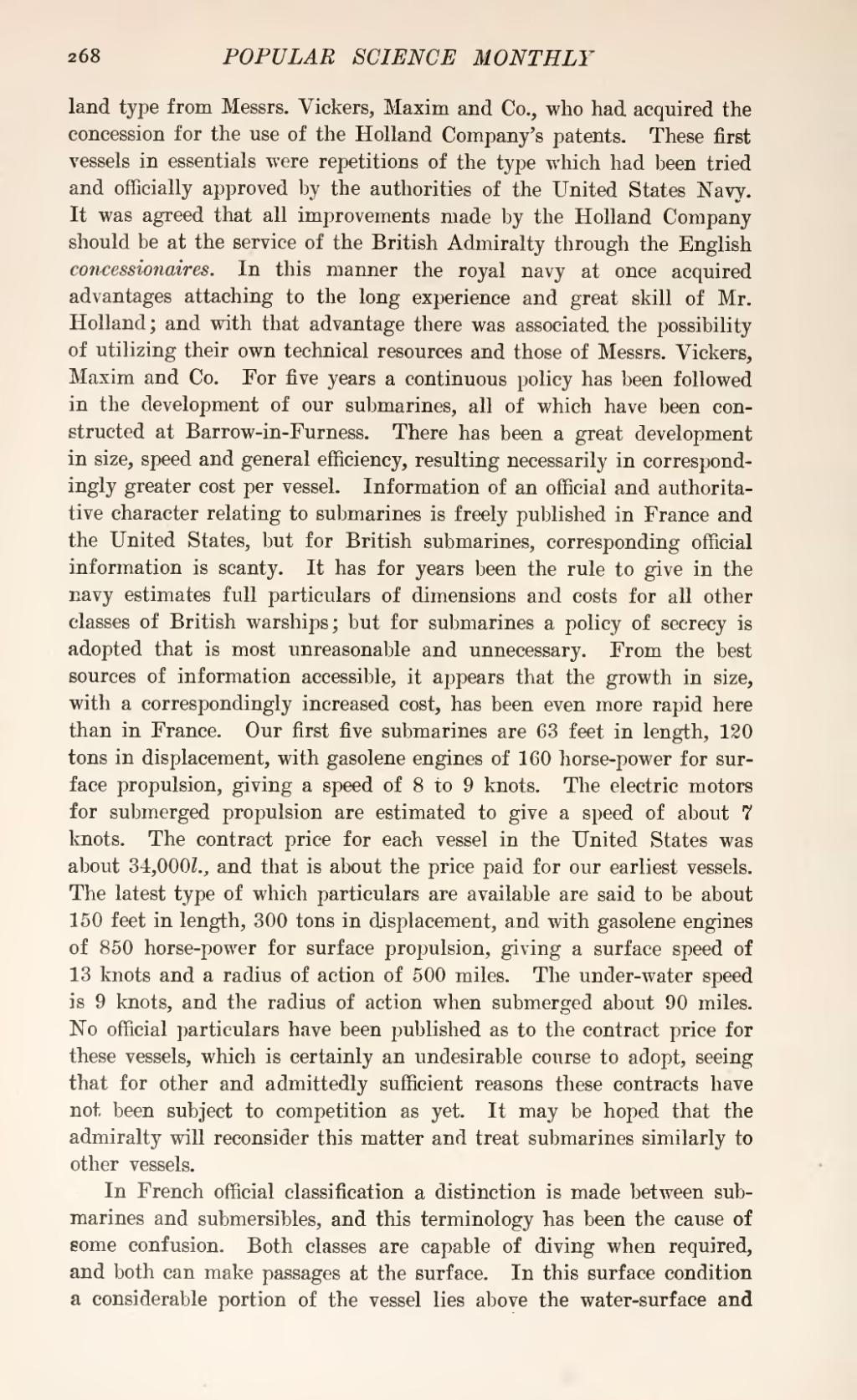land type from Messrs. Vickers, Maxim and Co., who had acquired the concession for the use of the Holland Company's patents. These first vessels in essentials were repetitions of the type which had been tried and officially approved by the authorities of the United States Navy. It was agreed that all improvements made by the Holland Company should be at the service of the British Admiralty through the English concessionaires. In this manner the royal navy at once acquired advantages attaching to the long experience and great skill of Mr. Holland; and with that advantage there was associated the possibility of utilizing their own technical resources and those of Messrs. Vickers, Maxim and Co. For five years a continuous policy has been followed in the development of our submarines, all of which have been constructed at Barrow-in-Furness. There has been a great development in size, speed and general efficiency, resulting necessarily in correspondingly greater cost per vessel. Information of an official and authoritative character relating to submarines is freely published in France and the United States, but for British submarines, corresponding official information is scanty. It has for years been the rule to give in the navy estimates full particulars of dimensions and costs for all other classes of British warships; but for submarines a policy of secrecy is adopted that is most unreasonable and unnecessary. From the best sources of information accessible, it appears that the growth in size, with a correspondingly increased cost, has been even more rapid here than in France. Our first five submarines are 63 feet in length, 120 tons in displacement, with gasolene engines of 160 horse-power for surface propulsion, giving a speed of 8 to 9 knots. The electric motors for submerged propulsion are estimated to give a speed of about 7 knots. The contract price for each vessel in the United States was about 34,000l., and that is about the price paid for our earliest vessels. The latest type of which particulars are available are said to be about 150 feet in length, 300 tons in displacement, and with gasolene engines of 850 horse-power for surface propulsion, giving a surface speed of 13 knots and a radius of action of 500 miles. The under-water speed is 9 knots, and the radius of action when submerged about 90 miles. No official particulars have been published as to the contract price for these vessels, which is certainly an undesirable course to adopt, seeing that for other and admittedly sufficient reasons these contracts have not. been subject to competition as yet. It may be hoped that the admiralty will reconsider this matter and treat submarines similarly to other vessels.
In French official classification a distinction is made between submarines and submersibles, and this terminology has been the cause of some confusion. Both classes are capable of diving when required, and both can make passages at the surface. In this surface condition a considerable portion of the vessel lies above the water-surface and

